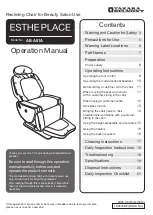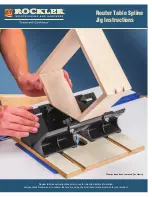
4
Procedure for Measuring Stream Flow
1.
Site Selection
•
Always follow safety precautions when entering the stream. If the water is too
deep or swift, select another site. Never venture out into the stream alone without
another person available to assist you in case of emergency.
•
Select two sites within a 50 m stretch of the
stream that are as far apart as possible and
are representative of the stream as a whole.
Avoid sites with bends or breaks in the
stream caused by rocks or sandbars. Try to
choose a site where some flow can be
observed. One site can have a swift flow
similar to that found in a riffle. The second
site can have a moderate or slow flow like
that found after a pool. It is not necessary
for both sites to be the same.
•
At each site, you are going to take a cross
section of the stream and measure its width
and depth. Try to select a cross section that
is shallow enough to measure depth with a
meter stick and easy to cross. To measure
stream flow using the Flow rate sensor,
avoid sites where the stream depth is less
than 10 cm.
•
The Flow rate sensor is equipped with a 5 m
cable. This enables you to take
measurements up to 4 meters away from the
shore without carrying the interface out into
the stream.
If the stream is wider than 4 meters, monitor
the stream flow out from one shore line, then have the person holding the
interface switch to the other side of the stream. This should reduce the chances of
dropping the equipment into the water and damaging it.
2.
Measuring a Stream Cross Section
•
Using measuring tape, determine the width of the stream cross section in meters
and record the measurement on a data sheet. Divide the cross section into six
equally spaced sections.

























